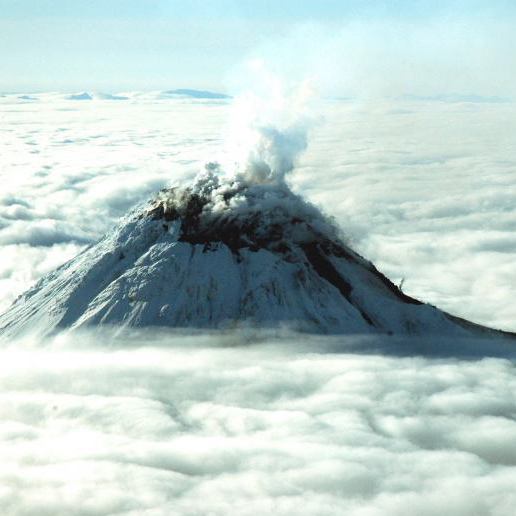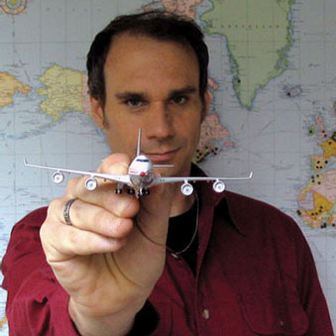Travel Tips
A Pilot on the Iceland Volcano’s Effects on Air Travel
 While broadcasting live from Wales last weekend, Peter spoke with airline pilot Patrick Smith, author of the “Ask the Pilot” column for Salon.com, about how the volcano ash can affect aircraft and the ripple effect of the Icelandic volcano eruption on global air traffic.
While broadcasting live from Wales last weekend, Peter spoke with airline pilot Patrick Smith, author of the “Ask the Pilot” column for Salon.com, about how the volcano ash can affect aircraft and the ripple effect of the Icelandic volcano eruption on global air traffic.
Patrick Smith: How’s the sky over there in Wales, kind of brown?
Peter Greenberg: You know if you look up to the naked eye you don’t see anything. It’s a beautiful sunny day, and yet there is some dust on some cars. We have seen something coming down. And in Norway for example, people are reporting lots of dust on their cars, and lots of ash. So it’s tough for people who are not pilots, who are not meteorologists, who are not vulcanologists to understand the importance and the significance of this when they look out their window and see a beautiful sunny day.
PS: You know this is really an unprecedented event. I would call it at least the biggest air travel story of the year. And maybe it’s more than that, we’ll see… Natural disasters rarely impact air travel for such lengths of time, or over such widespread areas. I mean, hurricanes and typhoons may slow things down for a day or two, but we’ve never seen anything like this. It’s going to be murderously expensive for the airlines with logistical ripple affects, really impacting people on six continents.
PG: Let me set the stage here: it spread horizontally over thousands of square miles, it’s at an altitude between 20,000 and 26,000 feet… does that give you any leeway as a pilot to literally be able to get around it?
You can find Air Travel News in our Airlines & Airports section.
PS: Normally volcanic ash tends to be localized in smallish areas and is easily circumvented. This one is different because it spread horizontally over thousands of square miles. And the altitude, between 20,000ish and 36,000 feet, puts it smack in the middle of the most densely packed air space.
 PG: But is there a way for you to basically adjust your flight plan? To say, we’re going to stay below 20,000 feet for so many miles and then fly to a higher altitude?
PG: But is there a way for you to basically adjust your flight plan? To say, we’re going to stay below 20,000 feet for so many miles and then fly to a higher altitude?
PS: You can do things like that, but that introduces all sorts of complications to long-haul flight planning. It impacts how much fuel you need, payload limitations, and what not. For that reason to people should realize that this is going to affect flights beyond Europe itself and into Asia and the Middle East and so on. One reason is, flights having to go different ways means having to plan for different alternate and diversionary airports, that means more circuitous routing, and like I said payload limitations. It gets very complicated, so it’s not as straightforward as it seems on the map. This isn’t just a Western Europe issue.
PG: I couldn’t agree more. We’ve had Qantas canceling all their flights to Europe, Singapore Airlines canceling all their flights to Europe, Cathay Pacific canceling all their flights to Europe etc. So it’s not just over the North Atlantic as you say, it is everywhere, right?
Visit our Natural Disasters & Travel section for the latest volcano news.
 PS: It is. You know, I’ve been asked is there an over reaction going on? Are we erring too much on the side of caution? I would say no. Volcanic ash is abrasive. It’s caustic. It can render cockpit windshields basically opaque.
PS: It is. You know, I’ve been asked is there an over reaction going on? Are we erring too much on the side of caution? I would say no. Volcanic ash is abrasive. It’s caustic. It can render cockpit windshields basically opaque.
PG: There are two instances that I covered: one in 1982, when British Airways Flight 9 was flying over Indonesia and flew right into a volcanic ash cloud. It knocked out all four engines of that 747. And it went into basically a sustained gliding dive. Miraculously, the pilots were able to restart the engines at a precariously low altitude, narrowly avoiding a disaster.
And then seven years later, KLM Flight 867 going from Amsterdam to Anchorage flew through the cloud which knocked out all four engines of that 747. And the ash was so coarse that it literally pitted the windshield to the point where the pilots could not even see. And they were still able to land the plane. Talk about a miracle.
Find out: Travel Insurance Coverage Limits & the Iceland Volcano.
PS: It can affect windscreen, engines, the internal parts of engines, the fuselage itself. It can also enter the cabin through the air-conditioning system. There are all kinds of complications here.
PG: In the Indonesia case, by the way, when the passengers got off that plane, they literally were ashen. The entire interior of the plane was covered with so much ash the damage to the plane was essentially a total loss.
 PS: And this isn’t to scare people, Peter. These were incidences that happened 20-odd years ago. The prognostic tools that were in place back then aren’t nearly as good as they are today. Now a days when long-haul pilots are preparing for flight they receive pretty detailed information volcanic activity as part of the weather briefing and flight plan.
PS: And this isn’t to scare people, Peter. These were incidences that happened 20-odd years ago. The prognostic tools that were in place back then aren’t nearly as good as they are today. Now a days when long-haul pilots are preparing for flight they receive pretty detailed information volcanic activity as part of the weather briefing and flight plan.
PG: You’re right, because the wake-up call was that KLM flight. And since that wake-up call, there are now nine volcanic ash notification centers around the globe doing exactly what you just said.
PS: Correct.
PG: So, what’s the prognosis from you as a pilot? When you have all these planes out of sequence, all these crews out of sequence, we’re talking what, three days, at least?
PS: At least. I was just reading my own airline’s forecast on things, and they just have no idea. I don’t think anybody really knows which way the upper level winds are going to carry this cloud. It remains to be seen. I think we’re going to see pretty substantial disruptions at least through early middle of the week upcoming.
By Peter Greenberg for Peter Greenberg Worldwide Radio.
Related links on PeterGreenberg.com:
- Travel Insurance Coverage Limits & the Volcano in Iceland
- European Flight Disruption Updates: How Travelers Are Getting Home
- Volcano News Update: Iceland Volcano Video, the Eyjafjöll Eruption
- Travel News Update: Volcanic Ash Cloud Causes Air Travel Disruption
- London-Heathrow Flights Cancelled as Volcanic Ash Spreads
- Air Cargo Disruption: Iceland Volcano’s Worldwide Economic Impact
- Volcano Causes Havoc for Travelers, Stunning Sunsets
- Natural Disasters & Travel section
- Dealing With Disasters When You Travel












